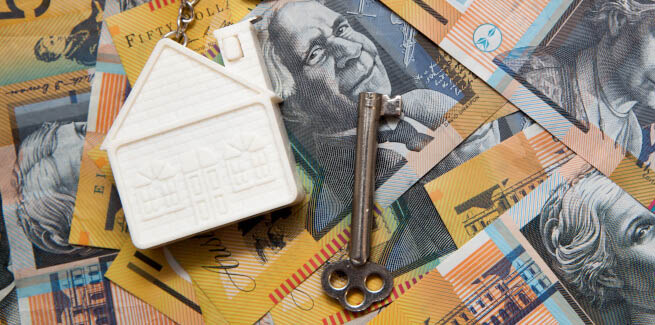The Australian Bureau of Statistics’ (ABS) lending indicators data for March 2021 has revealed that new loan commitments for housing rose by 5.5 per cent (seasonally adjusted) to a new record high of $30.2 billion.
The ABS attributed the rise in housing loan commitments in March to investor lending, which it said accounted for more than half of the increase.
The value of new loan commitments for investor housing rose by 12.7 per cent to $7.8 billion in March (seasonally adjusted), and 54.3 per cent higher than in March 2020.
According to the ABS, this has continued a period of increases in investor lending since May 2020, when it reached a 20-year low.
The value of new loan commitments to investors rose across all states except the ACT, with commitments rising by 13.0 per cent in NSW, 13.7 per cent in Victoria, and 19.0 per cent in Queensland.
Owner-occupier new loan commitments rose by subdued 3.3 per cent in March following a 1.7 per cent dip in February to over $22.4 billion (after breaking the $22-billion mark for the first time in January 2021), and is 55.6 per cent higher than March 2020.
ABS said this was driven by an 8.8 per cent rise in the value of new loan commitments for the purchase of existing dwellings over March to $15.5 billion, 45.2 per cent higher than March 2020.
The value of owner-occupier loan commitments for the construction of new dwellings fell 14.5 per cent in March to $3.6 billion, marking the first fall since June 2020 when the HomeBuilder grant was introduced.
However, it has remained at record-high levels and is 123.6 per cent higher than in March 2020, according to the data.
NSW accounted for the largest rise in the value of owner-occupier lending, rising by 8.2 per cent in March, while it rose by 1.6 per cent in Victoria and 1.1 per cent in Queensland. However, values fell in Western Australia (6.5 per cent) and South Australia (2.8 per cent).
ABS noted that the HomeBuilder grant – which was introduced in June 2020 and applications were closed in April, with applicants given until 30 April 2023 to submit all supporting documents – was reduced from $25,000 to $15,000, effective from 1 January 2021.
The value of new first home buyers (FHB) loan commitments was down by 0.9 per cent over March to $6.8 billion, but this was up 61.4 per cent from March 2020, ABS data showed.
The number of owner-occupier FHB loan commitments fell 3.1 per cent to 15,623 in March (seasonally adjusted terms), but commitments remained at record-high levels and was 58.3 per cent higher than March 2020.
Commenting on the data, ABS Head of finance and wealth Katherine Keenan said: “Investor lending has seen a sustained period of growth since the 20-year low seen in May 2020. The rise in March is the largest recorded since July 2003 and was driven by increased loan commitments to investors for existing dwellings.”
First home buyers propel housing market: HIA
Analysis of the ABS data by the Housing Industry Association (HIA) showed that FHBs accounted for more than 41 per cent of new loans issued over the past six months, which senior economist Nick Ward said was the highest for more than a decade.
“First home buyers are driving a wave of activity due to lower interest rates, government assistance and a reprieve in house price growth in 2020,” Mr Ward said.
“First home buyer activity in the market remains at its highest level since the stimulus associated with the GFC.”
Mr Ward attributed the strong levels of FHB activity to the HomeBuilder grant and other government stimulus measures such as the First Home Loan Deposit Scheme.
“HomeBuilder wasn’t targeted at first home buyers. However, the eligibility requirements of the grant meant that this cohort were significant beneficiaries of the program,” he said.
“They are also taking advantage of other stimulus measures such as the First Home Loan Deposit Scheme and state government incentives.”
Across the rest of the market, Mr Ward said the number of loans for the construction or purchase of a new home was 109.9 per cent higher in the three months to March 2021 than in the previous year.
“The data for March suggests that the surge due to HomeBuilder is starting to ease from record levels,” he said.
He also said that lending for renovations in the three months to March 2021 is 54.5 per cent higher than the same time last year, adding that lending for this segment reached its highest level since 2009.
HIA’s analysis of ABS data showed that across the states, the number of loans for the construction of a new dwelling in the three months to March 2021 compared with the same time last year has tripled in Western Australia (261.6 per cent) and Tasmania (202.7 per cent), more than doubled in Victoria (112.1 per cent), Queensland (176.4 per cent), South Australia (169.7 per cent), Northern Territory (177.0 per cent) and the ACT (130.2 per cent), and almost doubled in NSW (79.1 per cent).
Mr Ward concluded: “Today’s data provides further evidence of the exceptionally strong volume of home building activity to occur in 2021.”
Find out more about the top property and home buying trends in your local area at the Better Business Summit 2021. Places are limited so make sure you secure your place at the five-state event asap!
[Related: Mortgage levels continue record-breaking streak]
 ;
;
